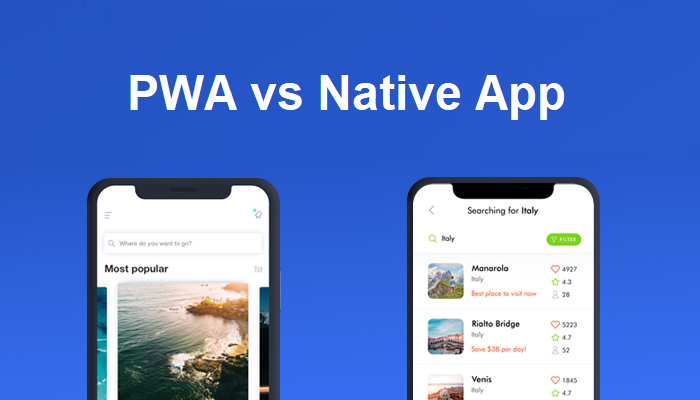Bydly Insights
Explore the latest news, trends, and insights across various topics.
When Websites Go Native: The Rise of Progressive Web Apps
Discover how Progressive Web Apps are transforming the web experience and why your site needs to go native for success!
What Are Progressive Web Apps and How Do They Work?
Progressive Web Apps (PWAs) are a modern approach to web application development that combines the best features of both web and mobile apps. They are built using standard web technologies such as HTML, CSS, and JavaScript, and are designed to provide a seamless user experience across different devices and platforms. One of the key characteristics of PWAs is their ability to work offline or in low-network conditions by utilizing service workers, which act as a proxy between the web app and the network. This makes PWAs particularly appealing for users who may have unreliable internet access.
Another significant benefit of Progressive Web Apps is their ability to be installed on a user's device without going through an app store. Users can simply add a PWA to their home screen directly from their web browser, granting them quick access to the application just like a native app. PWAs also support push notifications and background updates, which helps keep users engaged and informed. In summary, PWAs offer a versatile and efficient solution for developers looking to create applications that are fast, reliable, and engaging, all while maintaining the flexibility of the web.

The Benefits of Progressive Web Apps: Why Your Business Needs One
In today's digital landscape, Progressive Web Apps (PWAs) have emerged as a transformative solution for businesses seeking to enhance their online presence. Unlike traditional web applications, PWAs provide a seamless user experience by amalgamating the functionalities of both web and mobile applications. They load quickly, even on slow networks, by utilizing service workers and caching techniques, ensuring that users stay engaged. With the ability to function offline, PWAs allow customers to interact with your brand without interruptions, significantly increasing user satisfaction.
Implementing a PWA can lead to substantial benefits for your business, including improved conversion rates and higher user retention. PWAs are designed to be responsive, ensuring a consistent experience across various devices, which is vital in a mobile-first world. Additionally, since they operate via the web, there's no need for users to download and install anything from an app store, reducing barriers to access. This streamlined approach not only enhances user engagement but also encourages repeat visits, making it an essential strategy for any forward-thinking business looking to thrive in the digital age.
Progressive Web Apps vs. Traditional Websites: Which Is Right for You?
When deciding between Progressive Web Apps (PWAs) and traditional websites, it's essential to consider your user's needs and how they interact with your content. PWAs offer a more app-like experience, functioning offline and providing fast loading times, which can significantly enhance user engagement. Their ability to send push notifications and install directly onto a device’s home screen can also drive repeat visits, making them ideal for businesses that prioritize user retention. On the other hand, traditional websites are often easier to develop and can be sufficient for businesses that require a simple, informational presence without the need for complex functionalities.
Ultimately, the choice between progressive web apps and traditional websites will depend on various factors including your budget, target audience, and overall business goals. If you aim to create a seamless user experience with advanced features, a PWA might be the right choice. Alternatively, if your primary goal is to provide information and establish an online presence without the need for extensive interactivity, a traditional website could serve you well. Consider the trade-offs and assess which option aligns best with your strategy to maximize your online effectiveness.